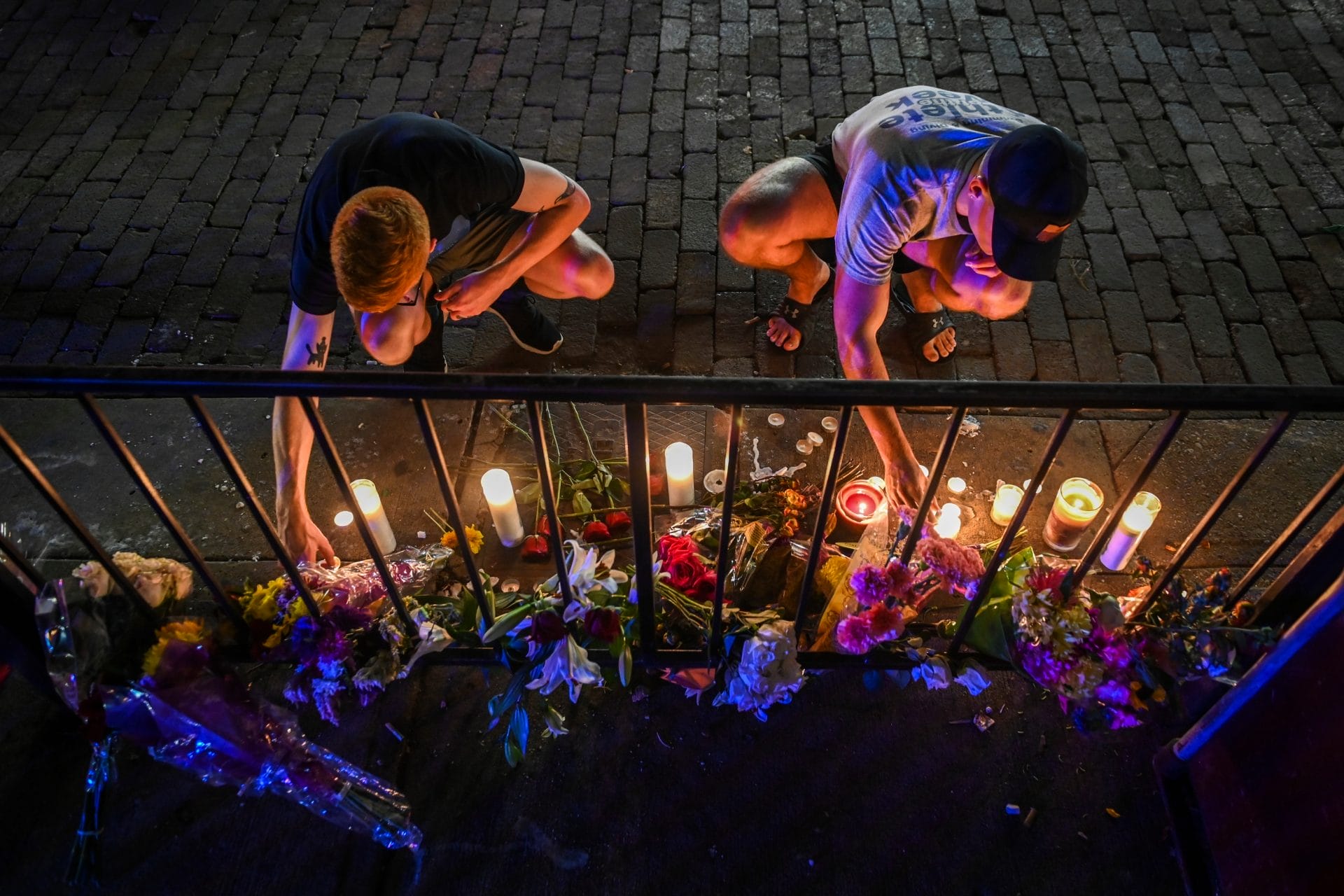
Gun violence in America has reached a 40-year high. It’s past time for the federal government to adequately fund research into this public health epidemic.
As the nation’s leading public health agency, the Centers for Disease Control and Prevention (CDC) has been charged with protecting Americans from health, safety, and security threats. If the CDC can’t address a public health crisis that takes the lives of over 36,000 Americans every year, it can’t effectively do its job. Consistently funding federal research into gun violence is critical to understanding its causes and crafting effective solutions. In 2019, Congress allocated funds to research gun violence to the CDC for the first time in more than 20 years—and it must continue this commitment. Lives depend on it.
Why This Matters
To make our communities safer, we must understand the causes of gun violence so that we can better develop policies to reduce it. This is how the government has treated past public safety threats—gun violence should be no different.
For example, scientists and engineers were able to identify risk factors for motor vehicle accidents after significant and sustained research. In response to the findings of researchers, automakers introduced new safety features and Congress passed the Highway Safety Act in 1966, which included laws to prevent people from driving while intoxicated and to discourage underage drinking. As a result, car-crash deaths fell from over 50,000 in 1967 to 38,659 in 2017, even while the overall population increased. To this day, the federal government spends roughly $35 million each year researching car crashes.
This kind of progress unfortunately hasn’t happened with gun deaths. Instead, gun deaths and injuries have gone up—in 2017, 39,773 Americans died from gun violence. That works out to 109 deaths per day, a striking figure that wouldn’t be tolerated if the gun lobby hadn’t spent so much time and money preserving its bottom line. This public safety issue has become a public health epidemic.
Researchers estimate that gun violence receives less than 2% of the funding it would be expected to receive based on the scope and toll of the problem. The underfunding of gun violence research is particularly stark when compared to funding for other common causes of death. The federal government spends only $57 in research monies per gun death. By contrast, lung disease, cancer, and heart disease receive $6,556, $2,996, and $1,740 per death, respectively.

SPOTLIGHT
GUN VIOLENCE STATISTICS
Explore facts, figures, and original analysis compiled by our experts. To end our gun violence crisis, we need to better understand where, how, and why violence occurs.
Learn MoreThe Problem
The National Center for Injury Prevention and Control was established at the CDC in 1992 as the leading federal organization for violence prevention. To fulfill its statutory mandate, the Injury Center conducts and funds research to prevent injury; this included a 1993 study titled “Gun Ownership as a Risk Factor for Homicide in the Home.” This research found that individuals with a gun in the home are 2.7 times more likely to become homicide victims, countering the gun lobby’s preferred narrative that guns make people safer.
Threatened by the potential policy and market implications of the study, the gun lobby moved to discredit its findings, launching a campaign to investigate and eliminate the Injury Center altogether. In 1996, self-described “NRA point person” Representative Jay Dickey (R-AR) sponsored an amendment to the FY-97 Omnibus that stated, “None of the funds made available for Injury Prevention and Control at the Centers for Disease Control and Prevention may be used to advocate or promote gun control.”
In that same bill, $2.6 million was earmarked for research on traumatic brain injury—the exact amount the CDC had budgeted for firearms research the year before. No funding was allocated for gun violence. Congress was sending a clear signal to discourage any further research into this public health crisis, and CDC and NIH heard them loud and clear. Federal gun research virtually froze.
The Dickey Amendment has been included in each funding bill since and was extended to the National Institutes of Health in FY-12. For more than 20 years, federal investment in gun violence research has been all but absent at the nation’s primary health protection agency, despite gun deaths increasing to levels not seen in decades.
GET THE FACTS
Gun violence is a complex problem, and while there’s no one-size-fits-all solution, we must act. Our reports bring you the latest cutting-edge research and analysis about strategies to end our country’s gun violence crisis at every level.
Learn More
The Solution
The Dickey Amendment does not legally prohibit research from taking place—lack of funding is the prohibiting factor. In recent years, that understanding has become more widespread. After the horrific mass shooting at Sandy Hook Elementary in December 2012, former Representative Dickey removed his support from the restrictive language and began advocating for research to continue.
Representative Tom Cole (R-OK) of the Appropriations Committee said CDC was “free to research anything they care to research” and no language prevented that. Another member of the Appropriations Committee, Senator Roy Blunt (R-MO), echoed this statement, saying CDC has “the authority to do gun violence research … if they want to.”
The FY-18 Omnibus bill included report language stating that, “While appropriations language prohibits the CDC and other agencies from using appropriated funding to advocate or promote gun control, the Secretary of Health and Human Services has stated the CDC has the authority to conduct research on the causes of gun violence.” In October 2018, CDC Director Robert Redfield said the institution is “poised to be able to do the research in this area if Congress chooses to give us additional funding.”
In 2019, Congress did just that. The final appropriations bill for the Department of Health and Human Services included $25 million for gun violence research, with $12.5 million going to CDC and $12.5 million going to NIH. This historic allocation ended a drought that had lasted more than two decades, conveying to public health institutions that not only was research into gun violence allowed—it was necessary. But this is just a start. We must continue and increase this funding in order to make up for lost time so that we can learn how best to protect American families and communities from the devastation of gun violence.
What Giffords Is Doing
Medical and healthcare professionals understand the urgency of addressing this crisis as few other professions do. Day in and day out, they contend with the ravages of gun violence in their emergency rooms and deliver heartbreaking news to family members whose lives will never be the same. We have an opportunity before us to change this reality. We’ve united with a coalition of medical and public health groups to demand that Congress fund federal research into gun violence.
Giffords Medical Partners
- Giffords
- American Academy of Pediatrics
- American Association of Colleges of Pharmacy
- American College of Physicians
- American Medical Student Association
- American Psychological Association
- American Public Health Association
- Big Cities Health Coalition
- National Association of County and City Health Officials
- National Network of Public Health Institutes
- Doctors for America
- Safe States Alliance
- Student Osteopathic Medical Association
- This Is Our Lane
Researching gun violence should not be a partisan issue. Our coalition, which has helped highlight the lifesaving potential benefits of federal research funds, was vital to securing the $25 million in federal funding in 2019. We rallied in Denver, Orlando, and New Orleans, and sent multiple letters to congressional leadership. In 2016, we organized the last four Surgeons General to call on Congress to properly fund this public health research.
And we’re not stopping here. This $25 million is just a fraction of the investment needed to catch up on the 20 years we lost. We’ll continue to fight for progress until gun violence is treated like the public health epidemic that it is.
SUPPORT GIFFORDS
We’re in this together. To build a safer America—one where children and parents in every neighborhood can learn, play, work, and worship without fear of gun violence—we need you standing beside us in this fight.



